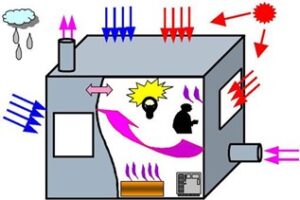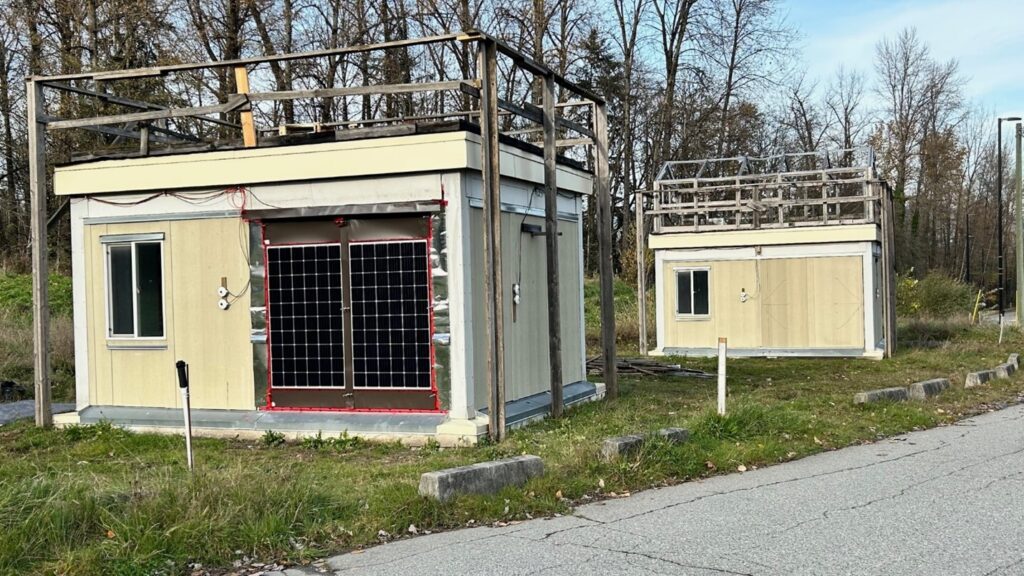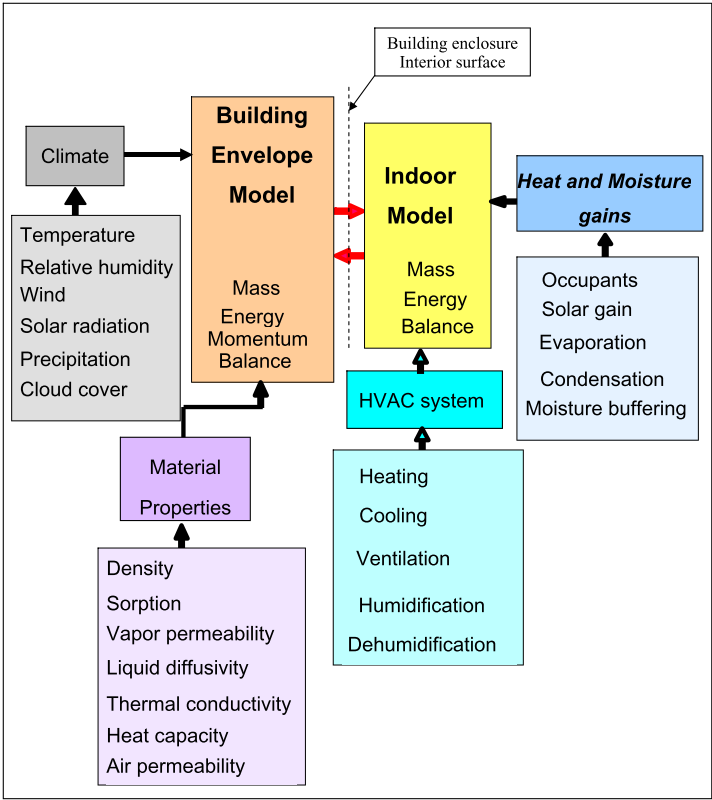Buildings are designed to create a space isolated from the surrounding environment that provides comfortable environmental conditions for occupants. Their functional performance to provide the desired outcome in an energy efficient and durable manner, however, depends on the dynamic interaction of the indoor environment, the building enclosure, and the mechanical systems for ventilation, heating (or cooling) and humidification (dehumidification). Ignoring the interrelated and coupled effects of the three design aspects and exclusively dealing with only one aspect of the building design may result in poor overall building performance: high energy consumption, poor indoor air quality and building envelope failure. For example, a building design with a low ventilation rate will reduce energy consumption, but the indoor humidity and pollutant levels will be elevated due to the low air exchange rate. Subsequently, this may lead to deterioration of building components and occupants’ health due to high moisture accumulation in the building structure and poor indoor air quality, respectively. Consequently, it is important to consider a building as a system and apply an integrated design approach to attain an optimized building performance.
Today there is renewed interest in energy conservation and a drive for sustainable building design that reduces natural resource consumption and GHG emissions. In response, new materials, systems and designs are emerging and government regulations and requirements are increasing. So as to not repeat the leaky condo crisis of the 1970s, new ideas and technologies need to be evaluated for their implication not only to energy conservation, but also to indoor air quality, durability and life cycle cost. A typical whole-building hygrothermal performance analysis considers a building as a system and takes into account the hygrothermal loadings and predicts simultaneously the hygrothermal states of the building envelope, the indoor air and the energy consumption of a building in an integrated manner.

Building as an integrated system
Experimental Studies
In order to consider the whole building performance, the BSCE utilizes our highly developed research facilities to conduct material property measurements and generate experimental data for validation of whole-building hygrothermal models. The Whole Building Performance Research Laboratory (WBPRL) serves as a powerful field investigation tool to conduct research on the dynamic interactions between the building envelope and the indoor and outdoor environment in real climatic conditions through monitoring of the energy consumption, the hygrothermal performance, and the indoor air quality. Through the comparison of a reference and test building, the fundamental understanding of the dynamic heat, air and moisture (HAM) interactions between the building envelope, indoor environment, and mechanical systems is advanced.

Numerical Studies
The BSCE makes use of several commercial and in-house computer modelling programs, including an advanced proprietary whole-building hygrothermal model called HAMFitPlus for simultaneous analysis of the energy efficiency, durability and indoor environmental conditions of a building in an integrated manner. In combination with other hygrothermal, building energy, and computational fluid dynamics (CFD) modelling programs, the tools are used to assess and optimize the energy performance, thermal comfort, and durability with respect to various climates, envelope assembly materials and layer configurations, and building operation scenarios. We aim to develop a comprehensive building optimization and decision-making tool that integrates whole-building simulation, risk assessment and cost-benefit analysis, with the objective of designing a building that is energy efficient, durable, economical, environmentally friendly, and provides comfortable and healthy indoor air quality to occupants.


